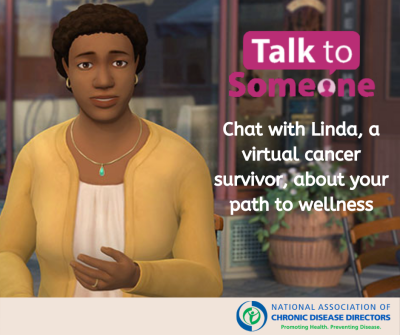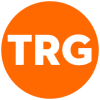Innovative Cancer Communications Tools Keep Survivors Focused on Healthy Behaviors

“Cancer survivor.” It’s a title of honor that 17 million Americans are proud to wear. While the title is hard-won, for many survivors the sense of relief and gratitude drift away quickly, leaving in its place difficult challenges such as depression, substance use, and unhealthy diet and lifestyle. These disturbances have a real impact — disrupting healing and putting survivors at risk of recurrence and secondary cancers.
Unfortunately, this post-treatment baggage often is exacerbated by changing relationships that disrupt survivors’ trusted healthcare teams and support systems, making it difficult to overcome challenges on their own.
Working with the National Association of Chronic Disease Directors and the Centers for Disease Control and Prevention, The Reis Group helped launch Talk to Someone, a conversation simulation tool, through a mix of media relations, stakeholder outreach, and digital media marketing to bring the resource to those who would benefit most. The tool creates opportunities for cancer survivors to start conversations about living healthier lives. In each conversation simulation, survivors can ask “Linda,” the platform’s virtual cancer survivor, a variety of questions. Linda is programmed to give brief, informative, and emotionally supportive answers to help shape behavior change, while also citing her own experiences as a survivor.
As I was test-driving the tool, “chatting” with Linda felt a little like a guessing game. I wondered, for example, “How would she respond if I said I was considering changes to my diet?” But as the conversation progressed, I found myself becoming genuinely engaged. The conversation felt natural, a little like a chat with a friend. Programmed prompts helped keep the conversation moving forward in a constructive way without getting stuck in a frustrating customer-service-chatbot death spiral.
But before The Reis Group started promoting the tool, I tested it with several friends who actually were cancer survivors to get some direct target-audience feedback. I wanted to know whether they found it helpful and reflective of their own experiences. Were these the type of conversations they wanted or needed to have, with a virtual human no less?
I was pleasantly surprised by how open and receptive they were to it. They all said they learned something new, which seemed like a win. But most surprising was one friend’s unexpected admission of opening up to Linda about a post-treatment experience with depression.
She told me, “I wish this had been around after my treatment. It took me months to recognize my own depression. It could have saved me a lot of time and pain having someone to “talk” to whom I didn’t feel like I was burdening with another problem.”
Personally, I thought the tool had a nifty factor that would work for promotion, but to hear first-hand the benefits it could have with survivors brought home to me the fundamental reason we do the work that we do: the power of proactive, creative health care public relations for getting the right messages to the right audiences.
As the world changes, innovative tools that offer new and different ways to provide evidence-based health information are critical for public health. Public relations is a critical component to ensuring cancer survivors achieve awareness of these tools to help improve their health.
If you have a cancer survivor in your life, please consider sharing the tool with them, or checking it out for yourself to understand how you can better support post-treatment healthy lifestyles for your loved ones.




